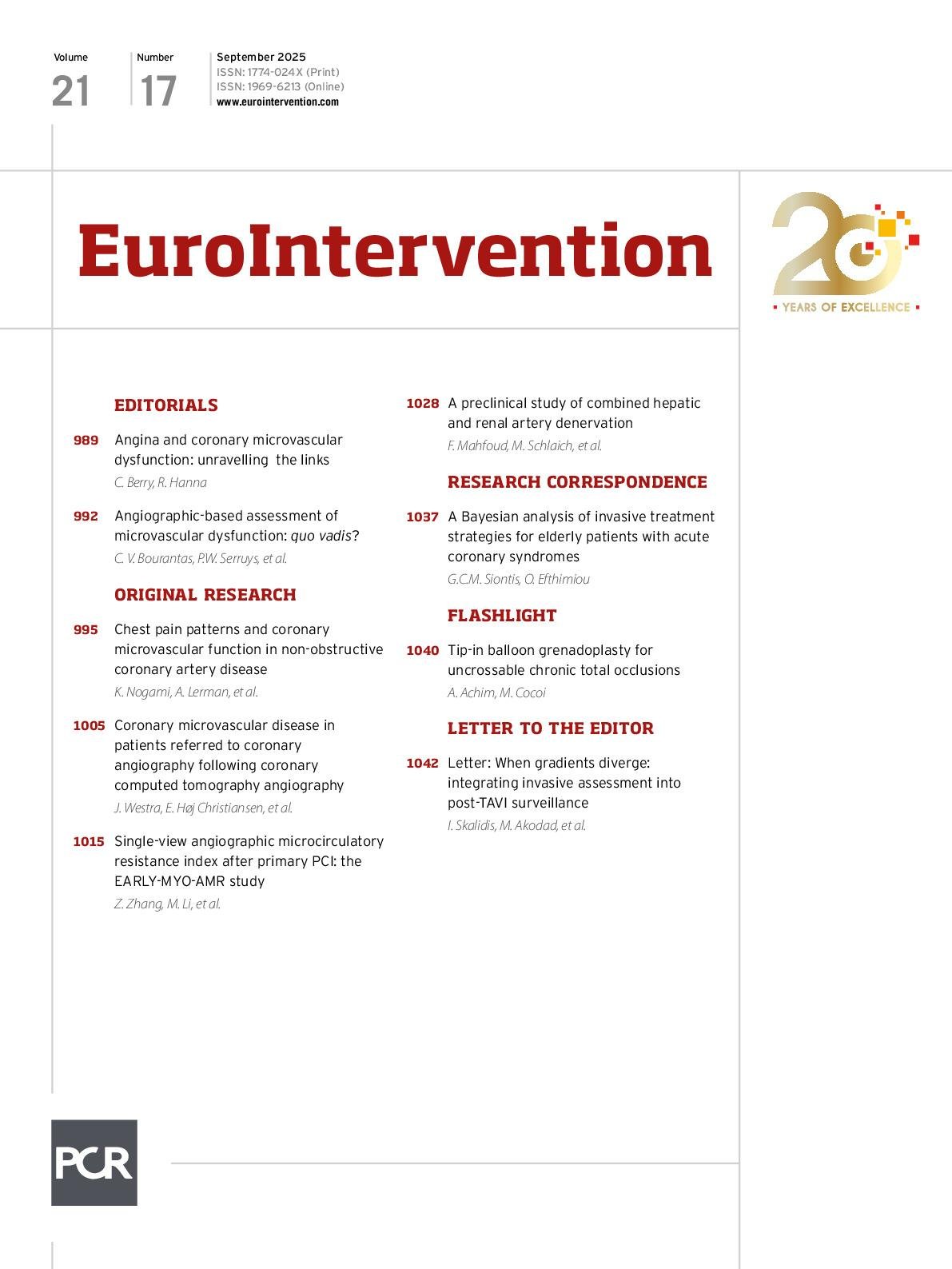Cory:
Unlock Your AI Assistant Now!
The assessment of transvalvular gradients remains a cornerstone of evaluating valve performance after transcatheter aortic valve implantation (TAVI). However, the clinical interpretation of invasive versus echocardiographic measurements continues to pose challenges, particularly when discordance arises. In this context, the recent study by van den Dorpel et al offers valuable insights by addressing the prognostic significance of invasive versus echocardiography-derived aortic gradients after TAVI1. Their findings – that only invasively measured gradients independently predicted mortality at 30 days, 1 year, and 2 years – offer a compelling case for re-evaluating how postprocedural valve function is assessed in clinical practice.
This divergence between invasive and echocardiographic gradients raises an important question: are these modalities truly interchangeable in routine post-TAVI evaluation? If invasive gradients offer stronger prognostic value, should they play a larger role in guiding follow-up or therapeutic decision-making, particularly when echocardiographic findings are borderline or discordant?
The consistent overestimation of gradients by echocardiography – especially in balloon-expandable valves, smaller annuli, or patients with a high ejection fraction – also warrants closer examination. Could these discrepancies be attributed solely to technical factors, such as Doppler alignment or flow artefacts, or might they reflect distinct haemodynamic responses in specific anatomical contexts? Further analysis of these variables could help refine the conditions under which gradient discordance is expected and clinically relevant2.
Notably, neither gradient modality correlated with bioprosthetic valve failure at 1 year. This invites consideration of whether gradient thresholds alone are sufficient to detect early structural deterioration. Should future surveillance strategies incorporate additional imaging biomarkers, such as acceleration time, cusp motion, or computed tomography-based valve morphology?
The authors are to be congratulated for this large, methodologically rigorous analysis, which adds important nuance to the interpretation of post-TAVI valve function. As TAVI expands into lower-risk and younger populations, optimising surveillance protocols becomes increasingly critical. Understanding when invasive assessment provides unique prognostic value – and how it can be integrated into personalised follow-up – will be central to advancing post-TAVI care.
Conflict of interest statement
I. Skalidis is supported by grants from the Gottfried and Julia Bangerter-Rhyner Foundation and from the Professor Dr Max Cloëtta Foundation. M. Akodad is a consultant to Edwards Lifesciences, Medtronic, and Abbott. The other authors have no conflict of interest to disclose.

